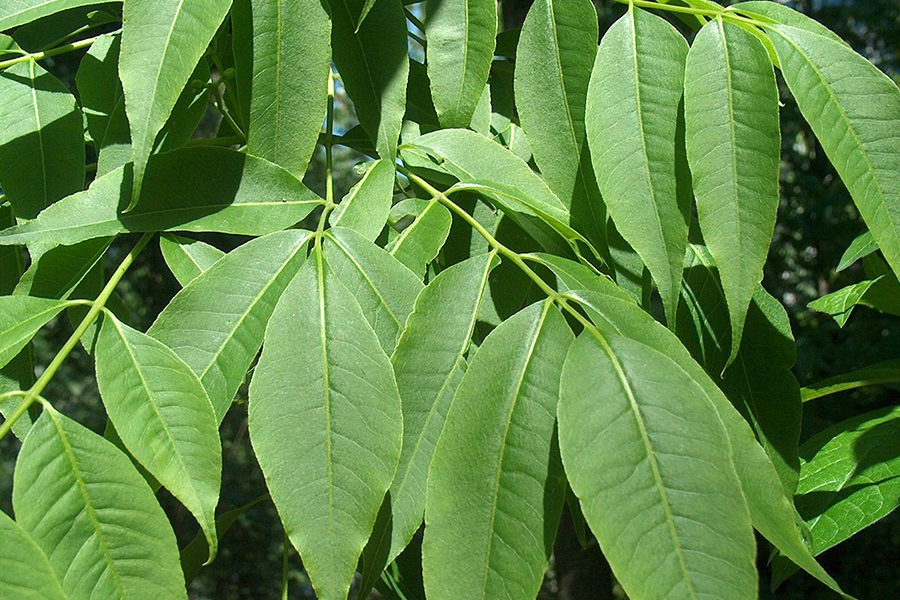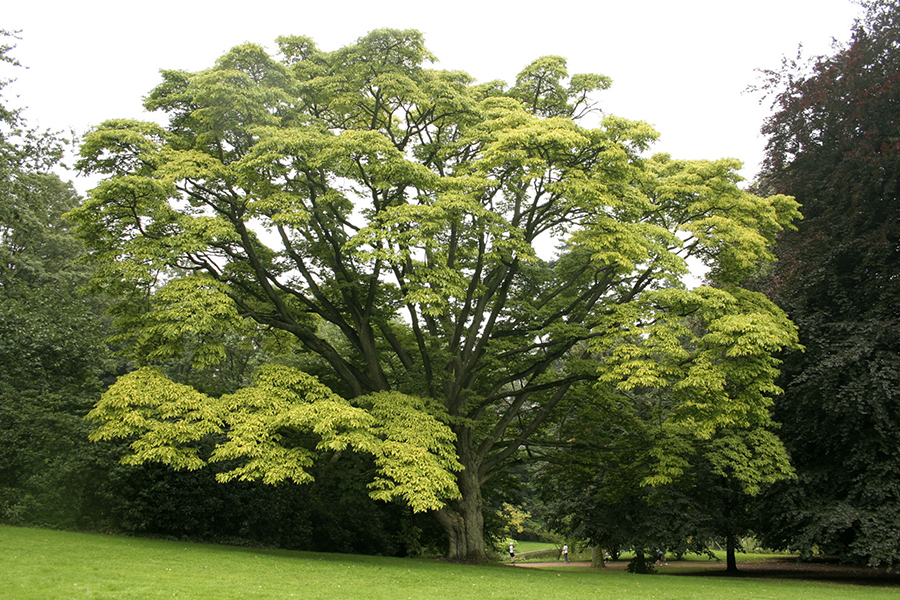Phellodendron amurense
This deciduous tree originating from Asia has distinctly corky bark.
Location
Wander up Hadwen Hill from Lovell Street towards the community garden and find a grove of Amur cork trees nestled to the left of the facility track!


History at Hadwen
The Amur cork trees weren’t formally recorded in the arboretum until 2020. However, their size would suggest they have been thriving in the arboretum for many decades.
Keep Learning
Detailed Species Information
The Amur cork tree is a deciduous tree in the family Rutaceae native to China, Korea, and Japan. This tree can grow up to 45 feet (14 meters) tall with a flat-topped crown and wide-spreading branches. The characteristic bark of the Amur cork tree is gray-brown and becomes corky in texture with age. The leaves are pinnately compound and oppositely arranged. Each leaf consists of 9–17 leaflets and is green in spring and summer and yellow in the fall. The tree blooms in the spring with small, greenish-yellow flowers that grow in clusters. In fall, the Amur cork tree produces clusters of small, black, fragrant, round fruits.
The Amur cork tree is believed to possess medicinal properties and has been used in traditional Chinese medicine for centuries. In landscaping, the tree is valued for its shade, yellow fall foliage, and corky bark. It should be noted that the Amur cork tree is considered an invasive species in some areas, including parts of the United States, and is prohibited in the state of Massachusetts.
